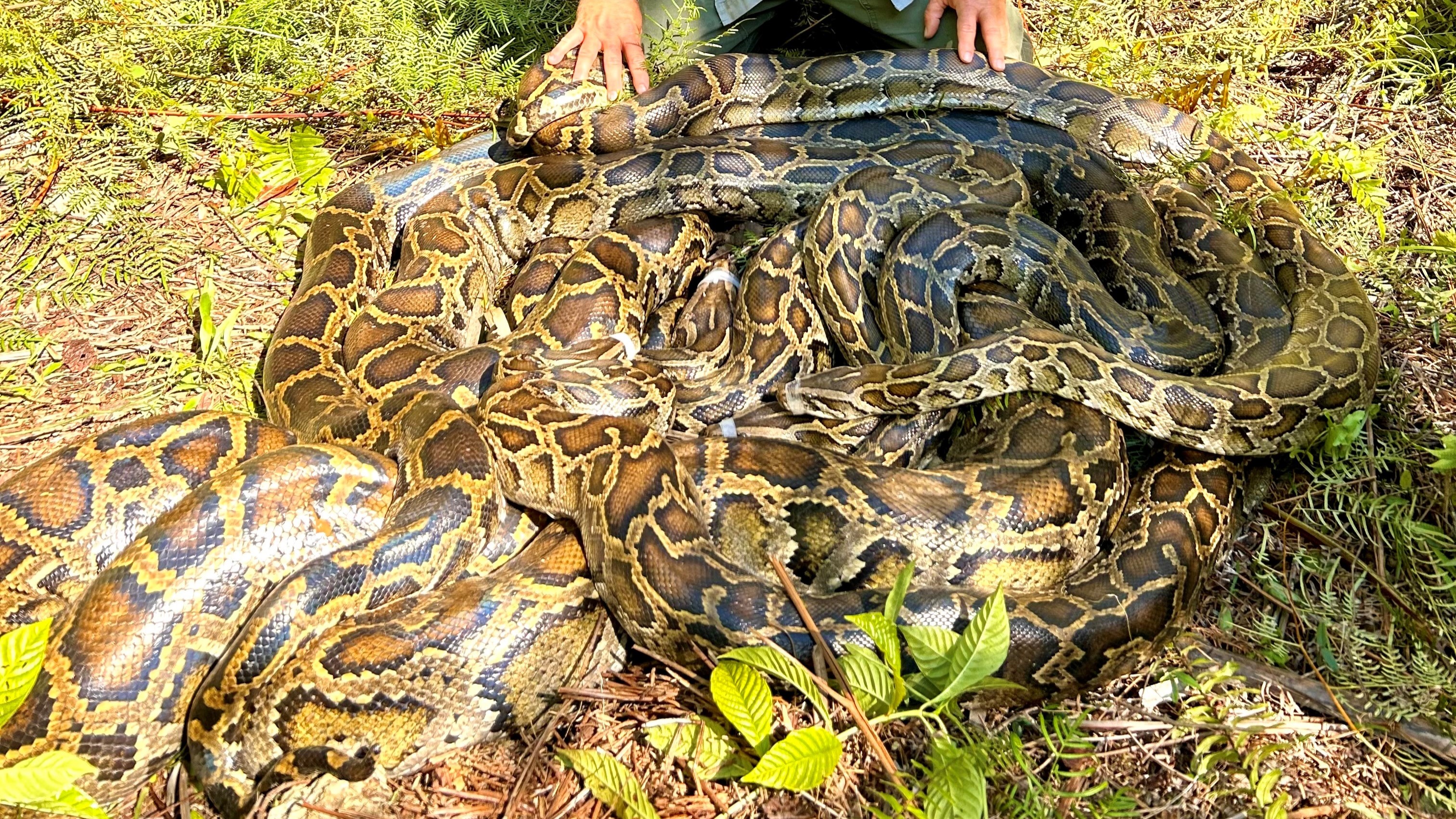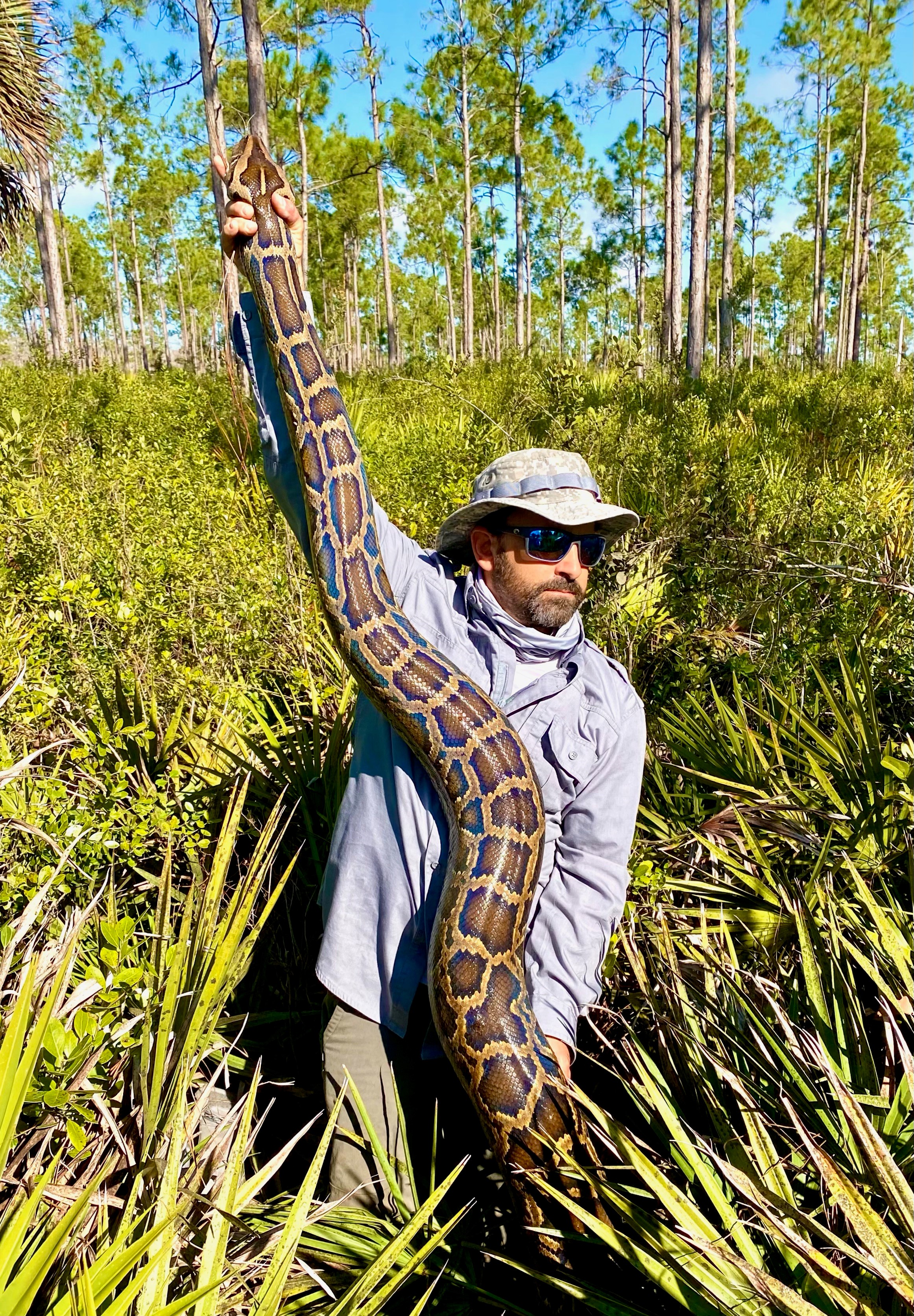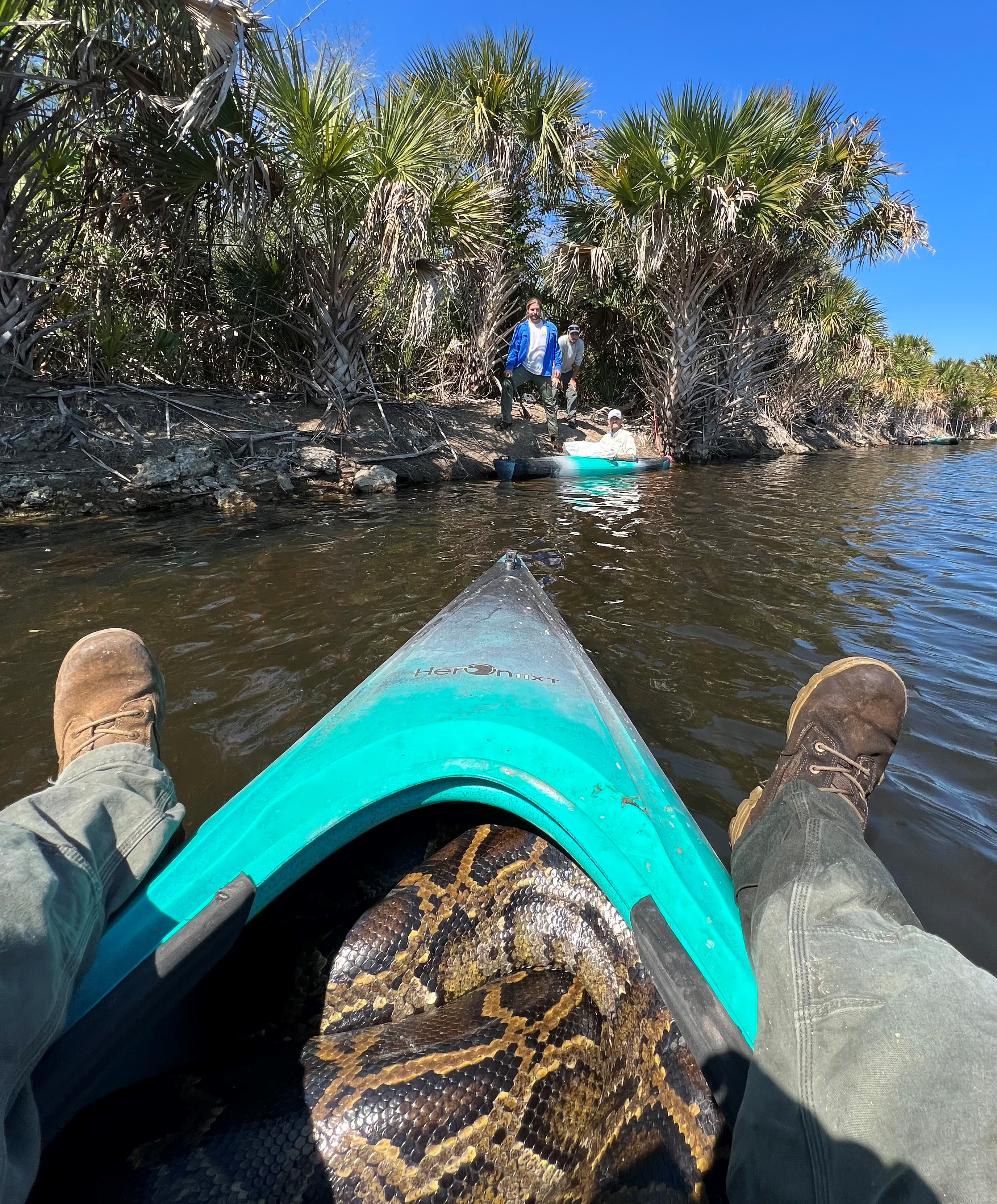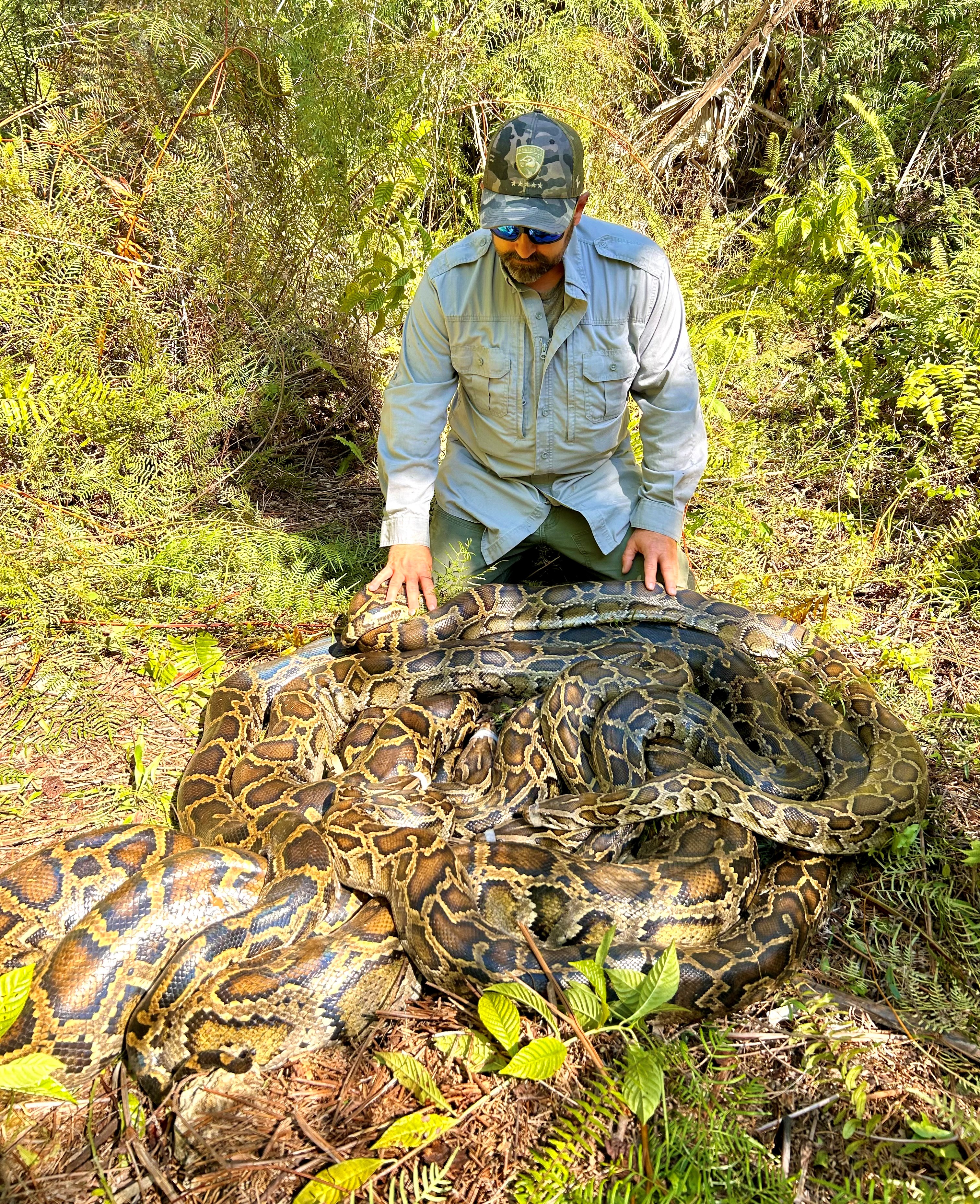Giant ball of Burmese pythons having sex discovered in Florida Everglades in record-breaking catch
In a record-setting expedition, conservationists in the Everglades captured and removed 11 invasive pythons from the environment.

An enormous mound of Burmese pythons entwined in a 7-foot-wide (2.1 meters) mating ball was recently found in Florida's Everglades after conservationists followed several tagged males that were out looking for sex.
The mating ball contained a 14-foot-long (4.2 m) female and five males, and two additional males were found close to the aggregation, Ian Bartoszek, a wildlife biologist and science coordinator at the conservation organization Conservancy of Southwest Florida, told Live Science in an email.
"It is an impressive sight to see a large breeding aggregation of pythons in the wild," he said. "They are truly beautiful creatures and are here unfortunately as a byproduct of the pet trade."
Bartoszek and colleagues headed into the Everglades in mid-February to track down invasive Burmese pythons (Python bivittatus) at the peak of their breeding season. The Conservancy's tracking program has been running since 2013. Through the program, adult male pythons are tagged with a radio transmitter and then released as "scout snakes" to lead researchers to other pythons during the breeding season in early spring. The newfound snakes are then removed from the wild, with the primary goal of preventing breeding females from producing more offspring.
Related: Enormous Burmese python killed in Florida Everglades was about to lay 60 eggs
The captured pythons are humanely euthanized and necropsied in a lab, to collect data on their condition, breeding potential and gut contents, for example. Scout snakes, on the other hand, are left in the wild to lead the trackers to more pythons.
To date, the program has led to the removal of 1,300 pythons, with a combined weight of over 35,000 pounds (16,000 kg), from 150 square miles ( 390 square kilometers) of public and private land across southwestern Florida.
Sign up for the Live Science daily newsletter now
Get the world’s most fascinating discoveries delivered straight to your inbox.

During the February snake-finding expedition, the team came across three mating aggregations. The first mating ball found included a 16-foot-long (4.9 m) female weighing 125 pounds (57 kilogram) and two males, with their tagged snake hiding nearby.
"We didn't have a bag with us large enough for the female so we had to transport her in a kayak and get her back to the field truck after hiking her out of the woods over our shoulders," Bartoszek said.

The second mating ball with six snakes was the biggest encountered on the trip, with the team finding a "pile of pythons" entwined, he added. In addition, a snake scout was found mating with a 13-foot-long (4 m) female.
In total, they captured 11 pythons with a combined weight of more than 500 pounds (227 kg).
"This was a record for us for the amount and total weight of snakes collected in a single day over ten years of the program," Bartoszek said. The scout snakes were left in the wild to slither another day.

Burmese pythons are thought to have been introduced to the Everglades at some point before 1985 when they were released into the wild via the pet trade. Their numbers grew slowly until the 1990s, when they skyrocketed. Since these generalist predators gained a foothold, they have decimated populations of native species, including mammals and birds, and thus disrupted this fragile ecosystem.
"It often feels like a CSI wildlife crime scene in our lab during necropsies and we often see first-hand how they are getting so large," Bartoszek said. "In fact 2 of the 3 females captured during the previously mentioned mating aggregations had the remains of white tailed deer inside.
"We see the remains of white-tailed deer inside of pythons often and it should sound an alarm," he said. "The Burmese python is the invasive animal issue of our time for native wildlife in Florida."

Hannah Osborne is the planet Earth and animals editor at Live Science. Prior to Live Science, she worked for several years at Newsweek as the science editor. Before this she was science editor at International Business Times U.K. Hannah holds a master's in journalism from Goldsmith's, University of London.









